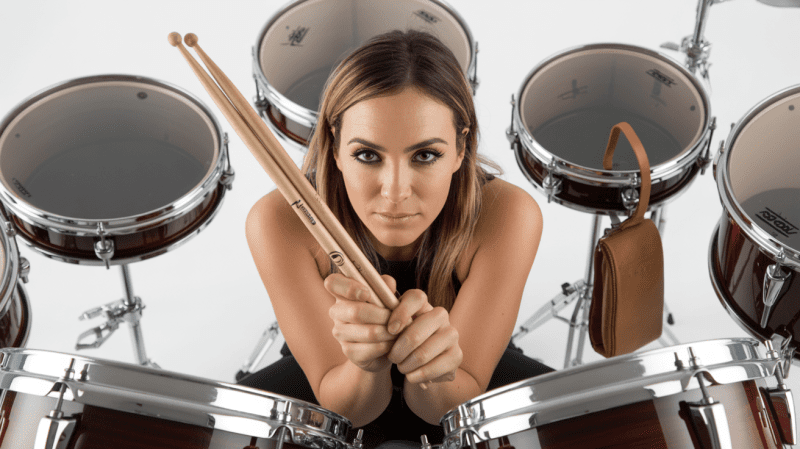How to Choose the Right Drumsticks: A Detailed Guide
Drumsticks: A Detailed Guide
Are you ready to rock out behind the drum set? Well, before you unleash your inner animal on those skins, there's one essential tool that every drummer needs – a trusty pair of drumsticks! These slender but mighty sticks are more than just tools for keeping beat; they're an extension of your rhythm and style. But with so many options out there, how do you choose the perfect pair? Don't worry, we've got your back! In this detailed guide, we'll walk you through everything you need to know about drumsticks – from different types and sizes to what famous drummers prefer. So grab your sticks and let's dive into the world of drumming expertise!
The Different Types of Drumsticks
When it comes to drumsticks, there's a wide variety of options to choose from. Each type offers its own unique characteristics and benefits, catering to different playing styles and preferences.
One common type is the classic wooden drumstick. These sticks are typically made from hickory or maple, known for their durability and versatility. Hickory sticks tend to be denser and provide a solid feel, making them suitable for heavy hitters who want maximum power behind their strikes. On the other hand, maple sticks offer a lighter touch with enhanced rebound and flexibility.
For those seeking a more pronounced attack and bright sound, nylon-tipped drumsticks might be the way to go. The nylon tip adds definition to your cymbal hits while maintaining durability against rim shots on drums.
If you're looking for a softer touch or practicing quietly without disturbing your neighbors, consider opting for brushes or rods instead of traditional sticks. Brushes feature flexible wire bristles that produce a gentle sweeping motion across your drums' surface, creating subtle tones perfect for jazz or acoustic settings. Rods consist of multiple thin dowels bundled together with rubber bands at one end – they offer adjustable volume levels by varying the number of dowels used.
Whatever type you choose, finding the right balance between weight and length is crucial in achieving optimal control over your drumming technique. Experimenting with different types can help you discover what works best for you based on factors like musical genre preference or playing style.
Remember that choosing the right pair of drumsticks is not just about personal preference but also about finding tools that enhance your overall performance behind the kit. So don't hesitate to try out various options until you find those perfect sticks that make you feel like an unstoppable force on stage!
Pros and Cons of Drumsticks
Drumsticks are the backbone of any drummer's arsenal, and choosing the right pair can make a world of difference in your playing technique. But like everything else, drumsticks come with their own set of pros and cons that you need to consider before making a purchase.
One major advantage of drumsticks is their versatility. They can be used across different genres, from rock to jazz to metal. Whether you're keeping beat in a punk band or providing intricate rhythms in a fusion ensemble, a good pair of drumsticks will adapt to your style effortlessly.
Another positive aspect is the variety available in terms of weight and size. Drummers have different preferences when it comes to stick weight - some prefer lighter ones for speed and agility, while others opt for heavier sticks for increased power and projection. Likewise, there are various sizes ranging from 7A (thin) to 2B (thick), allowing you to find the perfect fit for your hands.
However, it's important to note that drumsticks do have their downsides as well. One such drawback is their longevity. Drumming can be an intense activity, causing sticks to break or wear down over time. This means you may need to invest in multiple pairs if you're an active player or regularly performing live.
Furthermore, the type of wood used in drumstick construction can affect the sound produced on different drum surfaces. For example, hickory sticks tend to produce warmer tones on drums compared to maple sticks which provide brighter sounds.
In conclusion (not really!), understanding both the advantages and disadvantages of drumsticks is crucial when choosing the right pair for yourself. Consider factors such as weight preference, durability requirements based on your playing style and frequency as well as how certain materials interact with your preferred drums' surfaces.
How to Choose the Right Drumsticks for You
Choosing the right drumsticks is essential for any drummer looking to enhance their playing technique and keep a solid beat. With so many options available, it can be overwhelming to know where to start. However, with a little knowledge and experimentation, you can find the perfect pair of drumsticks that suits your style and preferences.
One important factor to consider when choosing drumsticks is weight. Drumsticks come in various weights, ranging from lightweight to heavyweight. Lighter sticks are more suitable for fast-paced playing styles and offer greater agility on the drums. On the other hand, heavier sticks provide more power and durability but may require additional effort.
Another consideration is stick size or thickness. Thin drumsticks produce brighter sounds and are ideal for jazz or softer music genres. Thicker sticks produce a fuller sound with increased volume; they work well for rock or heavy metal drummers who want more projection.
Besides weight and size, longevity is an important aspect when selecting drumsticks. Some players prefer wooden tips as they tend to deliver a warmer tone while others opt for nylon tips which offer enhanced durability.
Additionally, take into account the type of surface you will be playing on as different materials can affect how your drums sound. For example, wood-tipped sticks generally create warmer tones while nylon-tipped ones produce crisper sounds on cymbals.
Finding the right pair of drumsticks comes down to personal preference through trial-and-error experimentation! By trying out different types of sticks in various sizes and weights, you'll discover what feels most comfortable in your hands and produces your desired sound quality
What size drumsticks do most drummers use?
When it comes to drumsticks, size does matter. Choosing the right size drumsticks is essential for every drummer, as it can greatly impact your playing technique and overall performance. So, what size drumsticks do most drummers use?
The answer to this question varies from drummer to drummer, as personal preference plays a significant role. However, there are some common sizes that many drummers tend to gravitate towards.
One popular size is 5A drumsticks. These sticks are considered medium-sized and offer a good balance between power and speed. They are versatile enough to handle various genres of music and are suitable for both beginners and experienced players.
Another commonly used size is 7A drumsticks. These sticks are slightly thinner than the 5As, making them ideal for light or jazz styles where finesse and precision are key.
For those who prefer a bit more heft in their stick, 2B or even larger sizes like Rock or Metal models might be the way to go. These thicker sticks provide extra power but may sacrifice some speed.
Finding the right size depends on your own preferences and playing style. It's worth experimenting with different sizes until you find the one that feels comfortable in your hands and allows you to achieve the sound you desire on the drums.
How do I know which drumsticks to buy?
When it comes to choosing the right drumsticks, there are a few key factors to consider. First and foremost, you'll want to think about your playing technique and the style of music you typically play. Different drumming styles require different types of sticks.
Next, take into account the weight of the drumsticks. Lighter sticks are ideal for faster playing and intricate patterns, while heavier sticks offer more power and projection.
Consider the longevity of the drumsticks as well. Some sticks may wear down quickly with heavy hitting, while others are designed to last longer.
Another important factor is the surface sound you want to achieve. Thin drumsticks produce a brighter tone with less impact on cymbals and drums, whereas thicker sticks provide a fuller sound with more attack.
It's also worth considering whether you prefer nylon or wood tips. Nylon tips create a brighter sound on cymbals, while wood tips offer a warmer tone.
Finding the right pair of drumsticks involves some trial-and-error experimentation. Don't be afraid to try out different sizes, weights, materials, and brands until you find what feels comfortable and produces your desired sound.
Remember that personal preference plays an important role in selecting drumsticks! Experimentation is key in finding what works best for you as an individual drummer. So go ahead – try out different options until you discover your perfect match!
 What drumsticks do famous drummers use?
What drumsticks do famous drummers use?
What drumsticks do famous drummers use?
When it comes to drumming, many aspiring musicians look up to their favorite professional drummers for inspiration. And naturally, they're curious about the tools these renowned musicians use to create their beats.
While there is no one-size-fits-all answer to this question, as each drummer has their own unique preferences and playing styles, we can certainly explore some of the popular choices among famous drummers.
One of the most iconic pairs of drumsticks used by countless legendary drummers is Vic Firth 5A sticks. These sticks strike a great balance between weight and durability, making them versatile and suitable for various genres. They have become a go-to choice for many professionals due to their comfortable grip and excellent rebound.
Another favorite amongst famous drummers is the Zildjian Travis Barker Artist Series Drumsticks. Designed in collaboration with Blink-182's drummer Travis Barker, these sticks feature an elongated taper and large round tip that enhances projection and clarity while providing a solid feel on drums or cymbals.
Joey Jordison from Slipknot swears by Pro-Mark Joey Jordison Signature Drumsticks. These sticks are slightly thicker than average with a length between 16-17 inches. They offer great durability and power for heavy hitters like Joey.
Neil Peart (Rush) was known for his preference towards Promark Neil Peart Autograph Series Drumsticks – also called "The Professor" signature model. With its long reach and medium taper, this stick offers exceptional response on both drums and cymbals while maintaining balance throughout intense performances.
Of course, there are numerous other options available in the market depending on individual tastes and requirements. The key takeaway here is that finding your perfect pair of drumsticks involves experimentation based on factors such as playing style, musical genre, personal comfort level, stick weight preferences - all while considering how they affect sound production on different surfaces.
In order to achieve your drumming goals, you must choose the right drumsticks
Recent Related Articles:
Live Drumming Performance Tips: Unveiling the Secrets to an Electrifying Show



